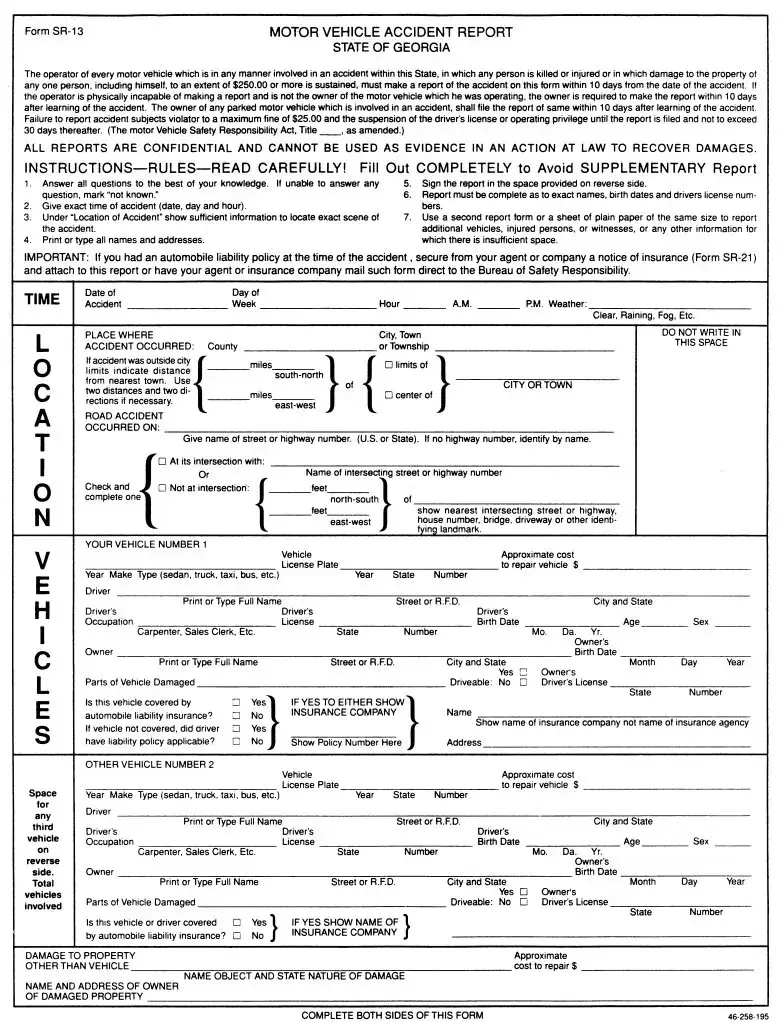Instructions on Utilizing Personal Accident Report Sr 13 Ga
Filling out the Personal Accident Report SR-13 Georgia form requires accurate and thorough information. Once you have all necessary details, follow these organized steps to ensure a complete submission. This process helps maintain compliance with state law and aids in effective documentation of the incident.
- Begin by answering all questions to the best of your ability. If you cannot provide an answer, indicate “not known.”
- Record the exact date, day, and hour of the accident.
- Details about the accident's location should be clear. Include sufficient information to pinpoint the exact scene.
- All names and addresses should be written clearly, either printed or typed.
- Sign the report in the designated area on the reverse side.
- Ensure all information regarding names, birth dates, and drivers' license numbers is complete.
- If additional space is needed for other vehicles, injured persons, or witnesses, use a second report form or a plain sheet of paper of the same size.
- Attach a notice of insurance (Form SR-21) if you had an automobile liability policy at the time of the accident.
Once the form is filled out correctly, it should be submitted within ten days of the accident. Compliance is essential, as failure to report can result in penalties, including fines and the suspension of your driver's license. Make sure all parts of the form are completed to avoid unnecessary complications.

